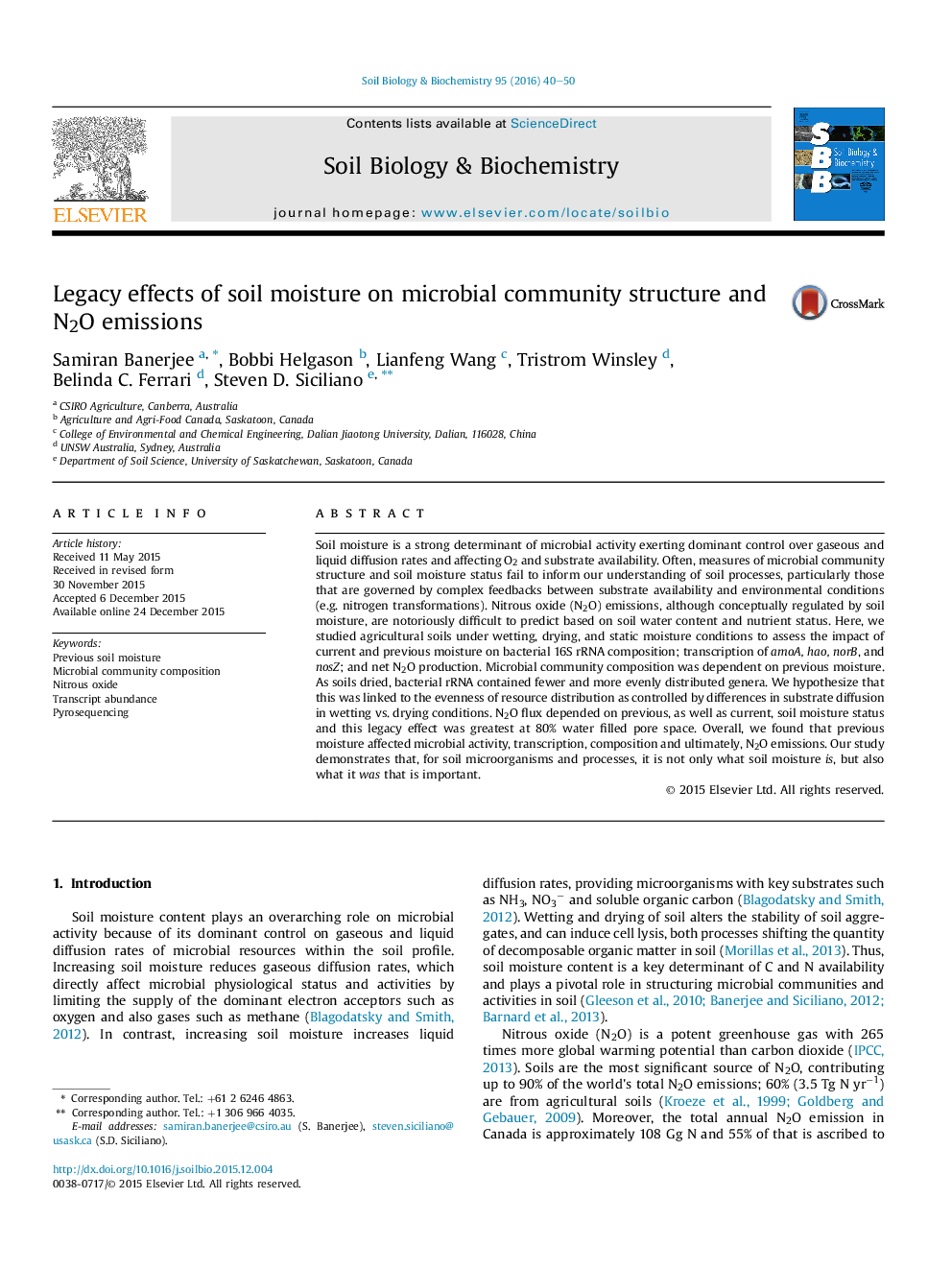| Article ID | Journal | Published Year | Pages | File Type |
|---|---|---|---|---|
| 2024263 | Soil Biology and Biochemistry | 2016 | 11 Pages |
Abstract
Soil moisture is a strong determinant of microbial activity exerting dominant control over gaseous and liquid diffusion rates and affecting O2 and substrate availability. Often, measures of microbial community structure and soil moisture status fail to inform our understanding of soil processes, particularly those that are governed by complex feedbacks between substrate availability and environmental conditions (e.g. nitrogen transformations). Nitrous oxide (N2O) emissions, although conceptually regulated by soil moisture, are notoriously difficult to predict based on soil water content and nutrient status. Here, we studied agricultural soils under wetting, drying, and static moisture conditions to assess the impact of current and previous moisture on bacterial 16S rRNA composition; transcription of amoA, hao, norB, and nosZ; and net N2O production. Microbial community composition was dependent on previous moisture. As soils dried, bacterial rRNA contained fewer and more evenly distributed genera. We hypothesize that this was linked to the evenness of resource distribution as controlled by differences in substrate diffusion in wetting vs. drying conditions. N2O flux depended on previous, as well as current, soil moisture status and this legacy effect was greatest at 80% water filled pore space. Overall, we found that previous moisture affected microbial activity, transcription, composition and ultimately, N2O emissions. Our study demonstrates that, for soil microorganisms and processes, it is not only what soil moisture is, but also what it was that is important.
Related Topics
Life Sciences
Agricultural and Biological Sciences
Soil Science
Authors
Samiran Banerjee, Bobbi Helgason, Lianfeng Wang, Tristrom Winsley, Belinda C. Ferrari, Steven D. Siciliano,
